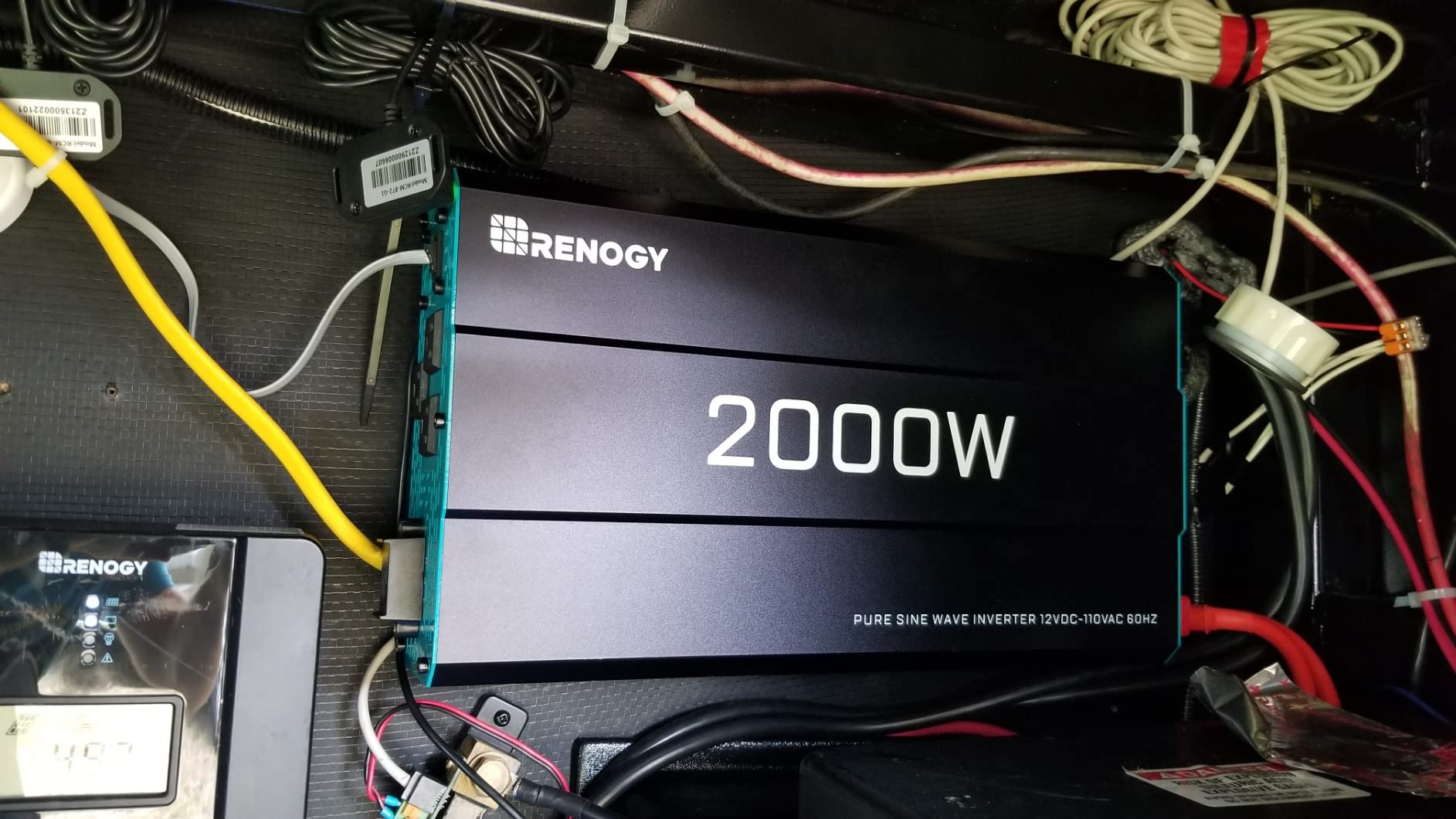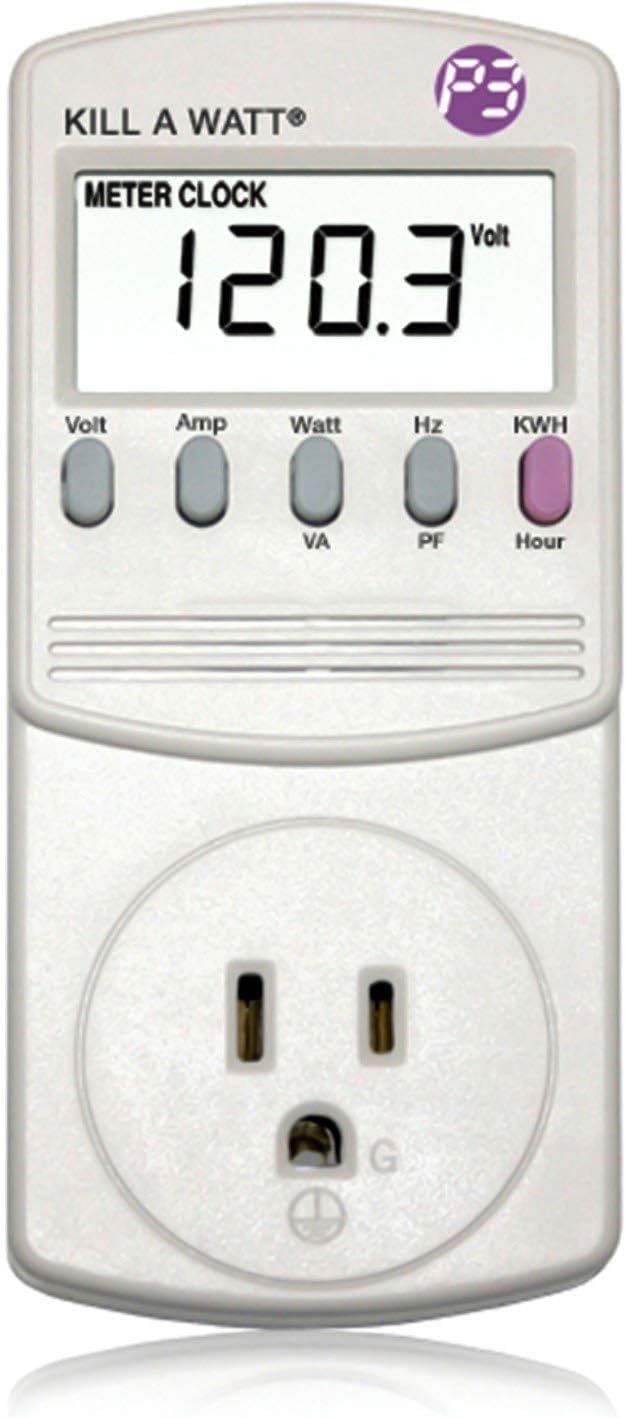Just received a shiny new 2000-watt inverter or thinking about getting one, but unsure what it can power. This guide is for you!
What Can a 2000 Watt Inverter Run?
Generally, a 2000 watt inverter can run appliances or a total load of up to 1600 watts. This means a 2000W inverter can run a fridge, TV, laptop, microwave, portable AC, toaster, coffee maker, deep freezer, iron, oven, electric fry pan, and vacuum.
You might wonder why we only use 1600 watts out of 2000. I'll explain this shortly.
There are also other factors to think about when deciding what you can power with your 2000W inverter. These are the inverter type, the power requirements, and the battery and cable size needed.
First, let's understand what we mean by '2000W' inverter's rated capacity.
What does 2000-Watt Inverter mean?
An inverter's job is to change direct current (DC), which comes from sources like a battery or solar panel, into alternating current (AC).
For example, the inverter changes low voltage like 12, 24, or 48 volts into 210-240 volts. This is the power most household appliances need and is similar to the electricity supplied by the grid.
The term "2000-watt" on a 2000W inverter signifies that it can supply 2000 watts of continuous AC power.
You might say --- great! I can power my 2000 watts of appliances with it. Well, that's not the case, here's why...
Leave 20% room for safety
For your inverter to last long, it's best to keep a 20% capacity buffer. Using the full 2000 watts all the time could overheat the inverter, and long-term heat could damage it.
So, I recommend you only connect appliances adding up to 1600 watts with your 2000W inverter.
Inverters have two power ratings: 1) continuous and 2) surge power. We need to understand both when deciding what appliances the inverter can power.
To make sure your 2000W inverter can handle your appliances, both these ratings must match. Let's discuss this part now...
2000W inverter capability --- surge power capacity vs continuous power capacity

A 2000-watt inverter usually means the amount of power it can provide ‘continuously’. However, there’s another important factor you shouldn’t ignore — the maximum surge rating.
So, what is surge power? It’s a brief, intense burst of energy that appliances need when they’re starting up. This spike in power lasts only a few seconds but is a crucial factor in the operation of many devices.
The appliances which require surge power are mostly motor base appliances like fridges, hair dryers, etc.
Here’s a list of appliances that require surge power:
- Air Conditioners
- Refrigerators
- Freezers
- Washers
- Dryers
- Dishwashers
- Electric Ranges and Ovens
- Microwaves
- Garage Door Openers
- Sump Pumps
- Furnaces
2000W inverter surge capacity limit: A 2000-watt inverter can handle up to 4000 watts of surge power (but always check the label to confirm).
So, whether you’re looking to power multiple smaller devices or a single large appliance with your 2000W inverter, don’t forget to check the surge power requirements on the appliance’s label. And make sure that the surge power rating of your total load should not exceed 4000W for a 2000W inverter.
This doesn't end here, there's one more thing to consider --- the type of inverter you have. Now, let's see what appliances different types of 2000W inverters can power.
What appliances can 2000W inverter run? --- Inverter type matters!
The type of 2000W inverter you own affects how well it can power appliances. There are two common types: modified sine wave and pure sine wave inverters. Let's discuss each type and how they impact the inverter's performance with appliances.
A pure sine wave inverter produces an electricity flow similar to that supplied by your utility grid. This type of inverter generates clean, reliable power, making it perfect for sensitive electronic devices such as computers, printers, audio/video equipment, medical monitors, power tools, and high-end audio systems.
A modified sine wave inverter is a basic version that can power simple electronics and appliances. However, it may cause harmonic distortions, which might lead to complications with certain devices.
Here are some examples of appliances that require a 2000-watt pure sine wave inverter:
- Computers
- Laptops
- Printers
- Audio/video equipment
- Medical monitors
- Power tools (like drills, grinders, and saws)
- Refrigerators
- Air conditioners
- Washing machines
- Microwave ovens
- Coffee makers
- Blenders
- High-end audio systems
- Amplifiers
- Mixers
- Studio equipment
Running these appliances on a modified sine wave inverter could potentially damage the device.
Now let's have a look at what appliance a 2000W inverter can power with some examples.
What Can a 2000 Watt Inverter Run?
Here's a list of appliances that can be run on 2000 watt inverter:
- Toaster: 850W1
- Microwave: 1000W1
- Coffee Maker: 1000W1
- Deep Freezer: Between 500W and 1500W1
- Dishwasher: 1500W1
- Vacuum: 1100W2
- Blow Drier (Hair): 1250W2
- Iron: 1200W2
- Toaster Oven: 1200W2
- Electric Fry Pan: 1200W2
- Space heater
how many appliances can a 2000 watt inverter run --- Load calculation
The process of calculating the power rating of your appliances is straightforward. Here are some easy steps:
- Look for the nameplate or label on your appliance. It usually specifies the power rating in 'watts' (W).
- If the wattage isn't directly indicated, calculate it by multiplying voltage (V) with amperage (A) (W = V x A).
- If you plan to power several appliances simultaneously, add up their wattage capacities.
For ease, consider using a watt meter to simplify the process, negating the need for complex calculations. It's a handy tool to understand the power needs of your 2000-watt inverter.
- Monitor your electrical usage by day, week, month, or year
- Large LCD display counts consumption by the kilowatt-hours
Reminder: The combined continuous load should not exceed 1600 watts and the surge wattage should remain below 4000 watts.
The performance of your 2000-watt inverter isn't just about its wattage. The size of the battery and the type of cables used can significantly affect how it works.
Picking the Ideal Battery Size and Cable for a 2000-Watt Inverter
For a 2000-watt inverter to run at full power for about 5 hours, you'll require approximately four 12V 200Ah lithium batteries.
Here's how to calculate the perfect battery size for your inverter:
- Calculate the total wattage of all the appliances you plan to operate.
- Multiply this total by the number of hours you wish to use them.
- Divide the result by 12 for a 12V battery system, 24 for a 24V system, or 48 for a 48V system. For a 2000-watt inverter, a minimum of 24v battery system will be required for optimal performance.
- Take into account that lead acid batteries can be drained up to 50% without damaging their lifespan, and lithium batteries up to 100%. Thus, divide the obtained value by 0.8 to ascertain the battery capacity needed.
What size wire do I need for a 2000 watt inverter? For a 12v 2000-watt inverter, you’ll require a cable of 4/0 AWG wire size, while for a 24v 1000-watt inverter, a 2/0 AWG wire size is needed.
Below is a chart showing what wire size you’d need for your inverter with varying voltages.

tips on Prolonging the Life of Your 2000-Watt Inverter
To maximize the lifespan and efficiency of your 2000-watt inverter, you need to take some precautions. Here are some essential tips:
- Avoid Overloading: Keep your usage within the inverter's capacity. Regularly exceeding the 1600-watt mark could strain the inverter and reduce its lifespan.
- Keep it Cool: Inverters tend to produce heat while working. Ensure it's placed in a cool and well-ventilated area to avoid overheating.
- Periodic Maintenance: Check your inverter's connections and cables from time to time. Make sure the terminals are clean and the wires are in good condition. Replace worn-out parts when necessary.
- Battery Care: The battery that supplies power to the inverter also needs care. Regularly check it for any signs of corrosion or damage, and replace it if required.
2000W inverter uses: fAQs
If you have any further questions, don’t hesitate to contact us or LEAVE A COMMENT. Thank you!



